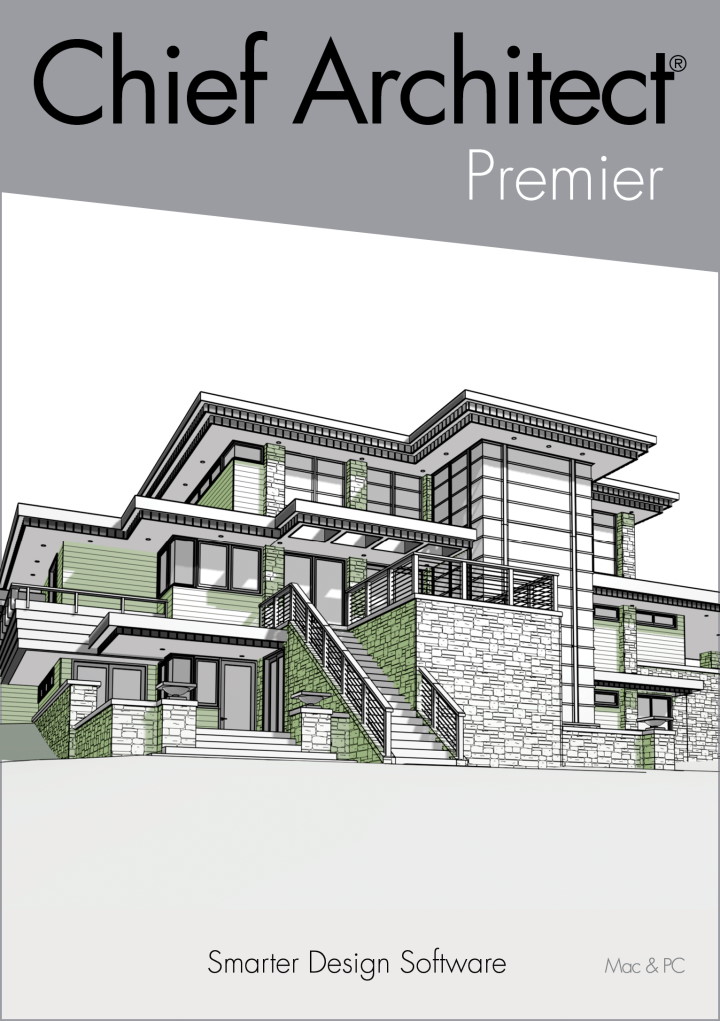Architect Recommended Tools for 3D Modeling
Architect Recommended Tools for 3D Modeling
Blog Article
Recognizing the Diverse Career Paths Available for Aspiring Architect
As a hopeful Architect, you have a globe of career courses waiting on you. Each course provides unique challenges and chances to use your imagination and technological knowledge. Whether you're drawn to standard architecture or the subtleties of lasting layout, there's a particular niche that lines up with your passions. Understanding these varied options can form your specialist journey, yet which direction will you pick to check out initially?
Typical Architecture: Designing Structures and buildings
Typical architecture concentrates on developing buildings and frameworks that blend performance with aesthetic appeal. As you discover this area, you'll value the detailed balance in between form and purpose. You'll discover to draw motivation from historical styles, incorporating elements like symmetry, materials, and workmanship. Your layouts can mirror social heritage, showcasing neighborhood traditions while satisfying modern-day demands.
You'll develop skills in composing, model-making, and website analysis, allowing you to visualize and communicate your ideas efficiently. Engaging with customers, you'll require to recognize their vision and convert it right into practical styles.
Additionally, building codes and sustainability methods are essential in your job, guaranteeing your structures are eco pleasant and risk-free. As you grow in your job, you'll discover chances in property, industrial, or perhaps reconstruction jobs, each offering distinct challenges. Welcoming standard architecture leads the way for a satisfying profession that pays tribute to the past while forming the future.
Urban Planning: Forming Areas and Public Spaces
As an aspiring Architect, you can play a vital function as a metropolitan organizer, transforming how areas work and engage. By utilizing community interaction approaches, you'll ensure that residents have a voice fit their environment. And also, integrating lasting style concepts will assist produce spaces that not only fulfill today's needs yet likewise shield the future.
Function of Urban Planners
While several might consider designers as the single visionaries behind buildings, metropolitan organizers play a crucial role fit the more comprehensive landscape of communities and public rooms. They analyze land use, zoning legislations, and area requires to create sustainable settings that boost quality of life. By teaming up with different stakeholders, you'll assist make parks, transportation systems, and houses that promote social interaction and access. Urban organizers also concentrate on environmental considerations, making sure that growths integrate eco-friendly areas and support biodiversity. Your proficiency in spatial style and area dynamics allows you to visualize future growth while maintaining social heritage. In this crucial role, you'll straight affect just how individuals experience their environments, making every task a possibility for positive modification.
Area Involvement Methods
Effective community engagement strategies are crucial for city organizers to assure that the voices of residents are listened to and valued in the planning process. To foster meaningful discussion, you should prioritize open online forums and workshops where community participants can express their concepts and problems. By actively including and paying attention comments, you'll develop rooms that mirror the area's needs, eventually leading to even more lasting and effective urban atmospheres.
Sustainable Style Principles
When developing urban spaces, including sustainable design principles is important for producing environments that grow both environmentally and socially. Take into consideration incorporating green rooms, like parks and yards, to enhance biodiversity and enhance air quality.
Creating with water conservation in mind is also key-- think of rainfall gardens and absorptive surface areas to manage stormwater. Entailing neighborhood participants during the planning procedure assurances that the rooms you produce fulfill their demands and motivate social communication. By welcoming these principles, you'll add to vibrant, lasting city landscapes that benefit everybody.

Landscape Style: Developing Lasting Outside Environments
As you discover landscape style, you'll find vital design concepts that produce useful and attractive outside spaces. Sustainable practices play an essential role in making certain these atmospheres prosper while decreasing ecological impact. And also, you'll discover a range of occupation chances that allow you to make an actual difference in just how individuals engage with nature.
Design Principles in Landscape
Understanding style principles in landscape style is vital for creating sustainable exterior environments that balance with nature. You'll require to consider components like scale, balance, and percentage to assure your designs feel natural and inviting. Integrating indigenous plants not just enhances biodiversity but also minimizes water use, making your landscape resilient. Think of the circulation of room and how people engage with it; pathways and seating areas should invite exploration and relaxation. Furthermore, take notice of seasonal changes, developing with products that enhance the environments year-round (Architect). By prioritizing sustainability and looks, you can develop outdoor areas that enrich the area and advertise wellness. Welcoming these concepts will certainly establish a solid foundation for your job in landscape architecture.
Sustainable Practices Review
Sustainable methods in landscape style not only focus on visual appeals but likewise focus on ecological health and source preservation. You can develop rooms that advertise soil health and wellness, such as exercising and making use of natural products permaculture principles. Eventually, these techniques assure your designs benefit both people and the setting for years to come.
Job Opportunities Exploration
With a strong structure in lasting methods, landscape architecture offers a selection of job paths that allow you to make a meaningful influence on the atmosphere. Urban planners commonly work together with landscape architects to develop eco-friendly spaces in city settings, boosting city livability. If you're passionate about education and learning, consider coming to be a landscape architecture instructor, inspiring future generations.
Lasting Style: Concentrating On Eco-Friendly Practices
As you explore redirected here your career in style, accepting environment-friendly practices can set you apart in an affordable area. Lasting design concentrates on producing buildings that reduce environmental effect while boosting resident health. By including sustainable products, energy-efficient systems, and lasting building methods, you'll add to a greener future.
Beginning by getting expertise of green qualifications like LEED or BREEAM, which can bolster your qualifications. Consider exactly how all-natural light, air flow, and thermal efficiency can enhance style. Team up with engineers and environmental experts to introduce solutions that decrease waste and save resources.
Don't fail to remember the value of neighborhood involvement-- engaging local stakeholders can motivate layouts that integrate with the environment. As clients progressively focus on sustainability, your proficiency in environment-friendly practices will certainly not just draw in tasks yet also meet your interest for liable style. Welcome this crucial element of the career, and see your career flourish.
Historical Conservation: Protecting and Restoring Cultural Heritage
While you commence on your building trip, take into consideration the necessary duty of historical conservation in preserving our cultural heritage. This field concentrates on the security and remediation of significant buildings, websites, and frameworks that tell the stories of our past. By engaging in historical conservation, you'll assist protect the building heritage that forms neighborhood identity.
As a historical conservation Architect, you'll assess historical significance and analyze the condition of structures. You'll work closely with conservationists and historians to ensure authentic reconstruction methods are employed. This occupation course allows you to mix imagination with study, enabling you to make services that value original products and craftsmanship.
Your job not just adds to sustainability by reusing existing structures but additionally fosters a feeling of satisfaction within neighborhoods. Embracing this path will certainly help you end up being a guardian of background, protecting the stories and visual appeals that improve our lives.
Interior Architecture: Enhancing Indoor Spaces
Historic conservation and interior design both share a commitment to enhancing the constructed setting, yet they concentrate on different aspects. While historical conservation highlights preserving a structure's historical and social worth, indoor architecture nos in on maximizing indoor rooms for functionality and looks.
As an ambitious Architect, you'll find that indoor architecture enables you to see this here blend creative thinking with technological abilities. You'll develop rooms that not just look excellent but also promote comfort and effectiveness. This area entails recognizing how light, color, and products communicate within a space, impacting mood and functionality.
You'll work with different tasks, from residential homes to commercial offices, ensuring that each environment meets the needs of its residents. By prioritizing user experience, you can transform interiors right into useful and inspiring spaces, making a considerable effect on just how individuals connect with their environments. Embrace the opportunity to improve interior environments and shape the means individuals function and live.
Industrial Style: Merging Functionality With Aesthetic Appeals
Industrial design plays an essential duty in producing products that flawlessly mix looks with performance, making certain that what you make use of everyday is not only aesthetically attractive however also practical. As an ambitious Architect, you could involve on your own in this field, concentrating on creating everything from furnishings to consumer electronic devices. Your job includes comprehending user demands, materials, and manufacturing procedures, allowing you to develop ingenious solutions that boost daily experiences.
In industrial style, you'll frequently team up with marketing experts, engineers, and suppliers, making sure that your layouts are not only lovely but likewise possible. You'll discover to stabilize form and function, prioritizing use without giving up style. By sharpening your skills in sketching, 3D modeling, and prototyping, you'll be fully equipped to bring your ideas to life. This career have a peek here path provides a vibrant setting where creativity meets functionality, making it a rewarding selection for architects interested in forming the products of tomorrow.
Frequently Asked Questions
What Educational Qualifications Do I Required to End Up Being an Architect?
To come to be an engineer, you'll require an expert degree in style, normally a Bachelor's or Master's. Furthermore, you'll need to finish an internship and pass the Architect Enrollment Evaluation to exercise lawfully.
Are There Qualification Needs for Different Building Profession Paths?
Yes, there're certification needs for different architectural courses. Architect. You'll need to pass examinations, complete teaching fellowships, and in some cases pursue specialized training, depending upon your picked focus, like landscape style, metropolitan layout, or historic conservation
What Software Application Abilities Are Necessary for Architects Today?

Just How Can I Gain Practical Experience While Researching Design?
You can acquire sensible experience by interning at building firms, joining design competitors, offering for community tasks, or working together with schoolmates on real-world tasks. These opportunities boost your skills and construct important links in the industry.
What Work Opportunities Exist Outside Traditional Architecture Firms?
You can discover different job possibilities outside conventional style firms, like metropolitan preparation, interior layout, landscape design, building and construction management, property development, or perhaps roles in sustainability consulting. Each offers one-of-a-kind difficulties and benefits.
Whether you're attracted to conventional design or the nuances of sustainable design, there's a particular niche that aligns with your rate of interests.When making urban rooms, integrating lasting layout concepts is important for developing settings that thrive both ecologically and socially.As you check out landscape design, you'll discover essential design concepts that create gorgeous and useful outside spaces.Recognizing design principles in landscape design is important for creating sustainable outside settings that balance with nature.In industrial style, you'll usually collaborate with marketers, designers, and makers, ensuring that your styles are not just attractive however likewise practical.
Report this page